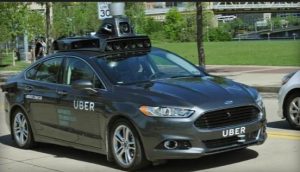 Have you ever wished you could ride in a passenger seat during a self-driving car test? You might want to go to Pittsburgh and skip Mountain View, Calif.
Have you ever wished you could ride in a passenger seat during a self-driving car test? You might want to go to Pittsburgh and skip Mountain View, Calif.
You can ride in an autonomous Ford Fusion as part of Uber’s self-driving car test project in Pittsburgh; and that will soon include a Volvo plug-in hybrid. Google has kept its test runs in its corporate hometown of Mountain View controlled to allow for only employees and strategic partners to participate.
Uber CEO Travis Kalanick told the press last week that development of autonomous vehicles is essential to the future of the six-year-old ridesharing company. Much of it has to do with eventually eliminating the cost of paying drivers, which would allow Uber to drop the cost of a ride down and make it even more attractive to customers who don’t want to make a car payment or pay for a taxi ride.
“We’ve got to be laser-focused on getting this to market, because it’s not a side project for us,” Kalanick said. “This is everything. This is all the marbles for Uber.”
Uber is no longer involved with Carnegie Mellon University’s self-driving car research for reasons that were never explained. That alliance with the Pittsburgh-based university, which is considered to be the leading university R&D center for autonomous vehicles, ended in the spring after being formed a year earlier. Uber did hire away four faculty members and 36 researchers and technicians, but Uber never collaborated with CMU on a single project. The ridesharing company did provide the $5.5 million gift to the university that it committed to.
Uber does have its own drivers behind the wheel to reduce the risk factor and protect passengers and other vehicles on the streets; and the company is working with authorities in Pittsburgh and the state of Pennsylvania to make sure safety rules are followed in the test cars. Tesla Motors is continuing to back its semi-autonomous Autopilot system even after a fatality and several collision incidents related to the Autopilot system. Safety will continue to be the key issue to be addressed by all parties rolling out self-driving car technologies.
Last week was significant for the next phase of autonomous vehicles with announcements from Uber and two major automakers. Plug-in electrified and hybrid vehicles have typically been used in self-driving test projects.
Purchases of plug-in electrified vehicles are expected to reach the 10%-to-20% of U.S. new vehicle sales mark, from their current less-than-1% level, in the next 15 years, according to a few industry analysts. Being connected to self-driving technologies and mobility services is expected to support that sales increase.
Uber will be adding Volvo cars to its test project. The companies will be investing $300 million to put 100 self-driving Volvo XC90 plug-in hybrid SUVs on the streets of Pittsburgh in less than four months.
Self-driving hardware and software will be added jointly, and tech support will be provided by Volvo. Uber will be adding Lidar, radar, additional cameras and sensors. Uber will allow customers to summon the self-driving vehicles from their phones. The fleet will be supervised by Uber staff in the driver’s seat for the time being.
Uber said it is buying the XC-90s from Volvo and is adding the self-driving hardware and software for the specific needs of its ride-hailing service. Uber is developing the technology in its Pittsburgh tech center, opened just 20 months ago. Volvo will provide technical support.
Sherif Marakby, Uber’s vice president of global vehicle programs, is leading the project. He joined Uber in April after a 25-year career at Ford in numerous senior engineering management positions. In his most recent role with Ford, Marakby served as the automaker’s director of global electronics and engineering, a position where he was responsible for electrical components on all Ford vehicles globally, including infotainment, driver assist, and connectivity.
He said that Uber’s deal with Volvo isn’t exclusive. The ridesharing company will roll out the test project to other cities and there could be other automakers and technology suppliers joining in. As for now, working with Volvo makes a good deal of sense for Uber.
“The foundation of the collaboration is Volvo’s strength in safety and vehicle development, and Uber’s strength and commitment to autonomy and autonomous technology,” Marakby said. “A significant part of that is the software. All of that is developed in house.”
Uber also announced last week that it had acquired Otto, a 90-person start-up company providing self-driving truck systems that could bring more of that technology to shipping and cargo transport. The acquisition is taking place for an undisclosed cost.
Uber plans to open a 180,000-square-foot facility in Palo Alto, Calif., to house the trucking tech company. Otto will operate as a stand-alone company focused on upending the long-distance trucking industry. Otto had previously hired former Google and Carnegie Mellon engineers. After the acquisition is complete, Otto engineers will also work out of offices in San Francisco and Pittsburgh.
Uber’s chief said the strategic alliance will team up with hardware manufacturers, Otto’s software expertise, and Uber’s large network of more than 50 million monthly riders as potential customers for a wide range of delivery services. It places Uber in the best position to be competitive with Silicon Valley giants like Google, Kalanick said.
Ford Motor Co. is tapping into Silicon Valley talent as well, said CEO Mark Fields, last week while visiting the automaker’s Palo Alto research facility. Fields announced that the company will offer a fully automated driverless vehicle for ridesharing services in 2021.
Fields said Ford is increasing its investments in Silicon Valley technology firms, tripling its investment in semi-autonomous systems, and more than doubling the size of its Palo Alto research team while expanding its campus in Silicon Valley.
Ford’s chief said he was not concerned that rival General Motors had made a high-stakes play in ride services with its $500 million investment in Lyft in January. “We’re not in a race to be first,” Fields said.
Ford does not yet know whether it will partner with Uber, Lyft, or other ride-hailing and ridesharing service providers. Fields said Ford may choose not to partner, and roll out such services on its own. The automaker has been rolling out carsharing and ridesharing in Europe and the U.S. in test projects in recent years. Fields does see Ford going toward fully autonomous vehicles, similar to the strategy Google has taken.
Ford Chief Technical Officer Raj Nair said the company likely will not offer a fully autonomous car without steering wheels or pedals to consumers until 2025 or later. Launching a self-driving car first for ridesharing is a better way to reach the mass market and make the cars more affordable, he said.
Uber CEO Kalanick isn’t speculating on when Uber might be ready to dispense with the human driver, saying that full automation can only be used now in limited places light in traffic. Uber and Lyft riders are anticipated to be more open to using driverless cars. Studies show that younger, Millennial consumers make for most of the Uber and Lyft customers. They’re less interested in car ownership and want to tap into the most efficient, advanced technologies to meet their mobility needs. Many of them have taken ridesharing trips and enjoy the reduced cost and socializing. They prefer it over driving their own car home from work, being absorbed and stressed out over getting through congested traffic at slow speeds. Whether it’s a human or machine driving the car, their main purpose for using Uber and Lyft is accomplished.
Electrified vehicles are expected to play a role in the future of self-driving, shared rides in urban settings. Their cost efficiency is valued, and growth in the charging infrastructure is expected to take away fear of being stranded in an electric car. Evercar, a provider of shared EVs for on-demand drivers (like Uber and Lyft), reported in the spring that it has been growing quickly in Los Angeles. By applying innovations in electric vehicles and carsharing technology, the company is making it possible for nearly anyone to access a vehicle to drive for the on-demand economy, Evercar said.
Navigant Research sees a global trend developing with on-demand mobility programs sprouting up, which indicates that transportation is moving toward a future that is both shared and electric. Automakers and tech partners are testing projects to examine its potential.
BMW recently announced that it will be expanding its ReachNow carsharing program to cover Portland, Ore., after successfully bringing the service to Seattle earlier this year. The service attracted more than 13,000 members within its first month of operation. BMW uses a mix of vehicles for the program that includes Mini Coopers and the BMW i3.
Nissan recently announced its collaboration with San Francisco-based electric scooter-share company Scoot Networks. The two companies will deploy 10 mobility concept cars (the Renault Twizy) in the Bay Area.
On August 2, startup company Green Commuter launched a carshare and vanpool fleet in Los Angeles using Tesla Model X SUVs. And there are several other two-wheel and four-wheel electrified vehicles being used in demonstration projects around the world.
Navigant says that companies looking to capitalize on this rapidly evolving business will need to offer high levels of vehicle accessibility, affordable hourly usage rates, and differentiating product options. As for autonomous vehicles, a recent Navigant leaderboard rating placed Daimler, BMW, Audi, and General Motors as the top automakers in the field. Ford, Volvo, Toyota, and Honda followed in the leaderboard ratings. All of these companies are investing heavily in connected, electrified, advanced technologies.
 diverting resources to help bring Puerto Rico back through battery production to help the island recover from hurricane devastation. Residents have been going without electricity. Tesla was below its production target to build more than 1,500 Model 3 units in the third quarter. The company had just delivered around 220 Model 3 sedans and produced 260 during the quarter. Earlier this week Tesla reported that “production bottlenecks” had left it behind the planned ramp-up for the Model 3.
diverting resources to help bring Puerto Rico back through battery production to help the island recover from hurricane devastation. Residents have been going without electricity. Tesla was below its production target to build more than 1,500 Model 3 units in the third quarter. The company had just delivered around 220 Model 3 sedans and produced 260 during the quarter. Earlier this week Tesla reported that “production bottlenecks” had left it behind the planned ramp-up for the Model 3.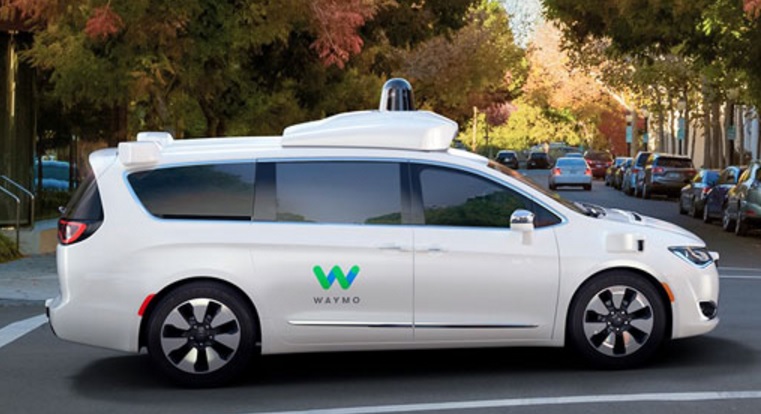 is teaming up with Mothers Against Drunk Driving, the National Safety Council, and the Federation for Blind Children in a campaign called “Let’s Talk Self-Driving.” Waymo also emphasizes that autonomous vehicles can eliminate most alcohol-related fatal crashes, and would offer the blind a transportation option. The company said the public awareness ad campaign will begin in Arizona on Monday. That’s where Waymo has been doing a lot of its self-driving car testing. The ad campaign will be delivered through digital ads, outdoor billboards, fuel pump advertising, and radio spots.
is teaming up with Mothers Against Drunk Driving, the National Safety Council, and the Federation for Blind Children in a campaign called “Let’s Talk Self-Driving.” Waymo also emphasizes that autonomous vehicles can eliminate most alcohol-related fatal crashes, and would offer the blind a transportation option. The company said the public awareness ad campaign will begin in Arizona on Monday. That’s where Waymo has been doing a lot of its self-driving car testing. The ad campaign will be delivered through digital ads, outdoor billboards, fuel pump advertising, and radio spots.
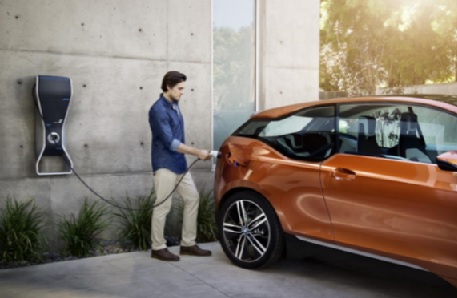 with the new plug-in hybrid Mini. Plug-in vehicles made up 4.5% of marketshare for all of the company’s vehicle sold last month. For the year, the automaker has delivered 50,711 plug-in vehicles, up a huge gain of 74.8% for the year.
with the new plug-in hybrid Mini. Plug-in vehicles made up 4.5% of marketshare for all of the company’s vehicle sold last month. For the year, the automaker has delivered 50,711 plug-in vehicles, up a huge gain of 74.8% for the year.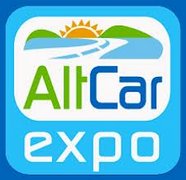 managers, sustainability directors, business owners, legislators, and others attending
managers, sustainability directors, business owners, legislators, and others attending  gnition. That will bring 20% to 30% more fuel efficiency than current models on the market with Mazda’s Skyactiv technology. The corporate sustainability campaign will shoot for 2019 to roll out the new Skyactiv-X and its first electric vehicle. That could be coordinated with its Toyota alliance for jointly developing EVs. Sustainable Zoom-Zoom is structured around reducing corporate carbon dioxide emissions, well-to-wheel, 50% by 2030 and 90% by 2050.
gnition. That will bring 20% to 30% more fuel efficiency than current models on the market with Mazda’s Skyactiv technology. The corporate sustainability campaign will shoot for 2019 to roll out the new Skyactiv-X and its first electric vehicle. That could be coordinated with its Toyota alliance for jointly developing EVs. Sustainable Zoom-Zoom is structured around reducing corporate carbon dioxide emissions, well-to-wheel, 50% by 2030 and 90% by 2050.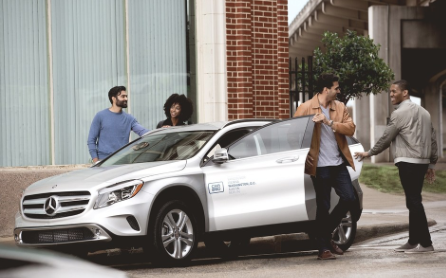 increased 40% year-over-year in the first half of 2017 compared to a year prior. That’s taking place at 11 North American locations with 4.5 million trips taken so far this year. Members are spending 33% more time traveling this year than last. The company is in discussions with other cities about car2go opening shop there, with the company emphasizing the environmental and economic benefits of using its one-way carsharing model.
increased 40% year-over-year in the first half of 2017 compared to a year prior. That’s taking place at 11 North American locations with 4.5 million trips taken so far this year. Members are spending 33% more time traveling this year than last. The company is in discussions with other cities about car2go opening shop there, with the company emphasizing the environmental and economic benefits of using its one-way carsharing model.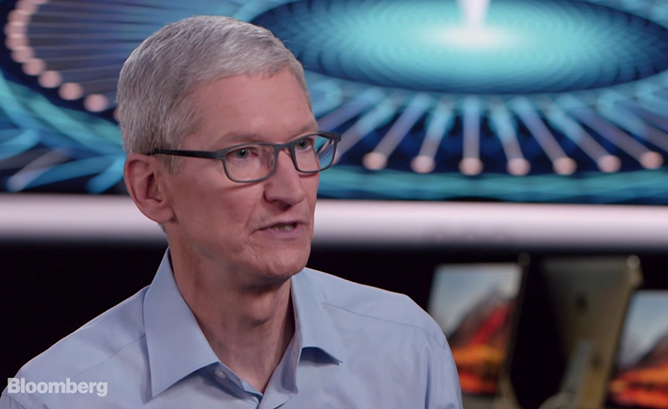 speculation over whether Apple will one day take its secret Project Titan electric autonomous car to its own factories. Cook wouldn’t speak to that topic, but did admit that autonomous vehicles is one of three technologies directing artificial intelligence in Silicon Valley – up there with electric vehicles and ride-hailing services. “We sort of see it as the mother of all AI projects,” Cook said. “It’s probably one of the most difficult AI projects actually to work on.”
speculation over whether Apple will one day take its secret Project Titan electric autonomous car to its own factories. Cook wouldn’t speak to that topic, but did admit that autonomous vehicles is one of three technologies directing artificial intelligence in Silicon Valley – up there with electric vehicles and ride-hailing services. “We sort of see it as the mother of all AI projects,” Cook said. “It’s probably one of the most difficult AI projects actually to work on.” now capable of mass producing autonomous Bolts and other self-driving models. CEO Mary Barra has said GM is the only automaker capable of building high-volume autonomous vehicles in its assembly plant. GM will also working with ride-hailing firm Lyft on testing these vehicles with Lyft drivers.
now capable of mass producing autonomous Bolts and other self-driving models. CEO Mary Barra has said GM is the only automaker capable of building high-volume autonomous vehicles in its assembly plant. GM will also working with ride-hailing firm Lyft on testing these vehicles with Lyft drivers.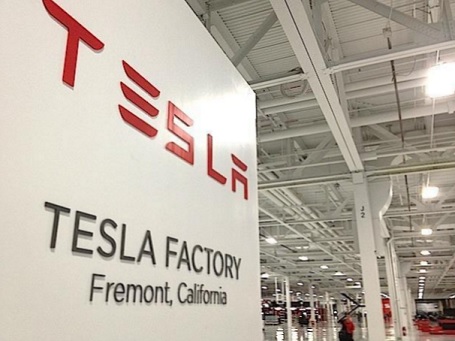 during yesterday’s annual shareholder meeting. The company may need to build at least three and
during yesterday’s annual shareholder meeting. The company may need to build at least three and 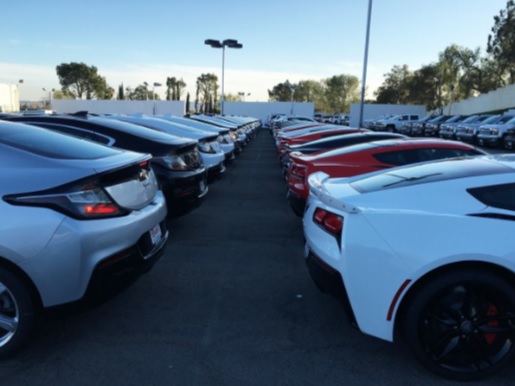 was next to zero just five years earlier; however it’s still just 0.2% of light-duty vehicles, according to the report. Last year saw a surge in sales – 60% more than in 2015, with much of that taking place in China. “China was by far the largest electric car market, accounting for more than 40% of the electric cars sold in the world and more than double the amount sold in the United States,” the IEA wrote in the report. “It is undeniable that the current electric car market uptake is largely influenced by the policy environment.”
was next to zero just five years earlier; however it’s still just 0.2% of light-duty vehicles, according to the report. Last year saw a surge in sales – 60% more than in 2015, with much of that taking place in China. “China was by far the largest electric car market, accounting for more than 40% of the electric cars sold in the world and more than double the amount sold in the United States,” the IEA wrote in the report. “It is undeniable that the current electric car market uptake is largely influenced by the policy environment.” Ford changes over CEO: Ford’s Mark Field is
Ford changes over CEO: Ford’s Mark Field is 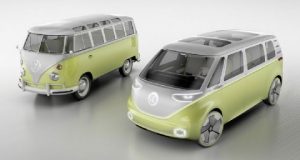 Detroit auto show: The North American International Auto Show has not been dominated by certain vehicle types, such as pickups and SUVs might have done in the past. Plug-in electrified vehicles have played their part, along with futuristic concept vehicles and mobility services. Back-to-back with the influential CES 2017 show in Las Vegas, the two car shows have had a few things in common. Volkswagen’s I.D. Buzz has taken a lot of attention. The electric microbus of the future is built on the MEB platform and may be able to travel 270 miles once fully charged. It offers maximum space utilization with all-wheel drive, electric motors at the front and rear axles, a fully autonomous driving mode (“I.D. Pilot”), and a new generation of display elements and controls…. The all-new Chevy Bolt electric car continues to win big awards, taking the North American Car of the Year award. The Chrysler Pacifica minivan was named North American Utility of the Year, the first time the award has been given out, and it also comes in a plug-in hybrid variation….. BMW showed its new 530 iPerformance plug-in hybrid. At 248 hp, it will go to 60 mph in about 5.9 seconds. It will also deliver up to 14 miles in all-electric mode, earning an EPA-rated 64 MPGe. The rear-wheel drive version will start at $51,400 while the all-wheel drive xDrive version will begin at $53,700…… Ford presented its vision for the “City of Tomorrow.” It looks at how near-term mobility advancements – including autonomous and electric vehicles, ride-sharing, ride-hailing, and connected vehicles – interact with urban infrastructure and create a transportation ecosystem to deal with challenges such as gridlock and air pollution. Ford’s City Solutions team has been working with cities around the world to propose, pilot, and develop mobility solutions. The team also is beginning to collaborate with Bloomberg Philanthropies and its global coalition of mayors…… Toyota rolled out a redesigned 2018 Camry with more interior space, advancements in its drive system, and a hybrid version that gets Prius-like fuel economy……… Waymo CEO John Krafcik announced that the former Google self-driving car division has been able to drop the cost of its Lidar sensors from about $75,000 per vehicle to about $7,500, which will help lower the cost of autonomous vehicle technologies for interested automaker partners. These new Lidar systems will be installed soon in 100 self-driving Chrysler Pacifica minivans that Waymo acquired from Fiat Chrysler Automobiles…… Audi unveiled the all-new Q8 SUV plug-in hybrid that will be out in production next year. It will be Audi’s second plug-in hybrid to enter the U.S. market, following the Audi A3 Sportback e-tron station wagon.
Detroit auto show: The North American International Auto Show has not been dominated by certain vehicle types, such as pickups and SUVs might have done in the past. Plug-in electrified vehicles have played their part, along with futuristic concept vehicles and mobility services. Back-to-back with the influential CES 2017 show in Las Vegas, the two car shows have had a few things in common. Volkswagen’s I.D. Buzz has taken a lot of attention. The electric microbus of the future is built on the MEB platform and may be able to travel 270 miles once fully charged. It offers maximum space utilization with all-wheel drive, electric motors at the front and rear axles, a fully autonomous driving mode (“I.D. Pilot”), and a new generation of display elements and controls…. The all-new Chevy Bolt electric car continues to win big awards, taking the North American Car of the Year award. The Chrysler Pacifica minivan was named North American Utility of the Year, the first time the award has been given out, and it also comes in a plug-in hybrid variation….. BMW showed its new 530 iPerformance plug-in hybrid. At 248 hp, it will go to 60 mph in about 5.9 seconds. It will also deliver up to 14 miles in all-electric mode, earning an EPA-rated 64 MPGe. The rear-wheel drive version will start at $51,400 while the all-wheel drive xDrive version will begin at $53,700…… Ford presented its vision for the “City of Tomorrow.” It looks at how near-term mobility advancements – including autonomous and electric vehicles, ride-sharing, ride-hailing, and connected vehicles – interact with urban infrastructure and create a transportation ecosystem to deal with challenges such as gridlock and air pollution. Ford’s City Solutions team has been working with cities around the world to propose, pilot, and develop mobility solutions. The team also is beginning to collaborate with Bloomberg Philanthropies and its global coalition of mayors…… Toyota rolled out a redesigned 2018 Camry with more interior space, advancements in its drive system, and a hybrid version that gets Prius-like fuel economy……… Waymo CEO John Krafcik announced that the former Google self-driving car division has been able to drop the cost of its Lidar sensors from about $75,000 per vehicle to about $7,500, which will help lower the cost of autonomous vehicle technologies for interested automaker partners. These new Lidar systems will be installed soon in 100 self-driving Chrysler Pacifica minivans that Waymo acquired from Fiat Chrysler Automobiles…… Audi unveiled the all-new Q8 SUV plug-in hybrid that will be out in production next year. It will be Audi’s second plug-in hybrid to enter the U.S. market, following the Audi A3 Sportback e-tron station wagon.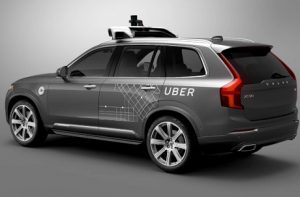 Uber has been testing its autonomous, shared rides for the past month in California,
Uber has been testing its autonomous, shared rides for the past month in California,  Have you ever wished you could ride in a passenger seat during a self-driving car test? You might want to go to Pittsburgh and skip Mountain View, Calif.
Have you ever wished you could ride in a passenger seat during a self-driving car test? You might want to go to Pittsburgh and skip Mountain View, Calif.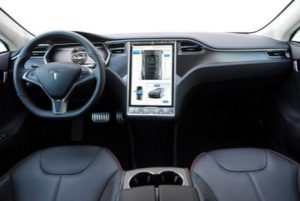 The fatality of a driver in a Tesla Model S with Autopilot is being described as the very first casualty from an autonomous vehicle technology. Here are details from the incident and where this may lead in the near future..……..
The fatality of a driver in a Tesla Model S with Autopilot is being described as the very first casualty from an autonomous vehicle technology. Here are details from the incident and where this may lead in the near future..……..